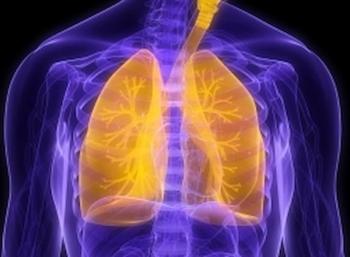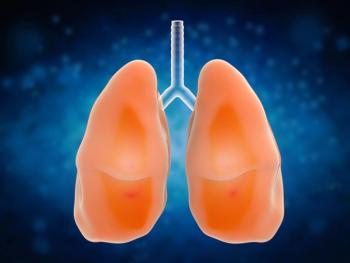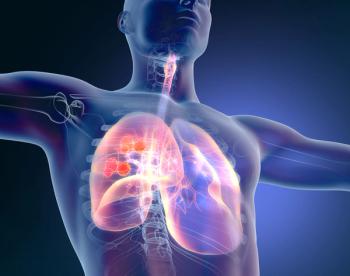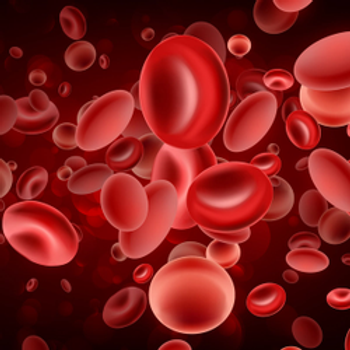
- ONCOLOGY® Companion, Volume 39, Supplement 5
- Issue 5
- Pages: 16-18
Diagnosing and Treating Patients With Epithelioid Sarcoma
Experts discussed diagnosing and treating epithelioid sarcoma, emphasizing the importance of clinical history and the role of multiple multidisciplinary clinicians in care.
During an Around the Practice program hosted by CancerNetwork, a panel of experts discussed several procedures for treating patients with epithelioid sarcoma, an extremely rare type of sarcoma. The diagnosis of any sarcoma is a multidisciplinary effort, and often, an inability to access a patient’s entire clinical history can exacerbate the difficulty of making a diagnosis. For epithelioid sarcoma, there are certain signs that someone has the disease, such as a mass on the hand and axillary swelling. The panel also spoke about the utility of tazemetostat (Tazverik) as a treatment and how they prefer it after at least 1 prior line of chemotherapy.
The panel was led by Neeta Somaiah, MD, a professor and the chair of the Department of Sarcoma Medical Oncology in the Division of Cancer Medicine at The University of Texas MD Anderson Cancer Center. She was joined by Edwin Choy, MD, PhD, an associate professor of medicine at Harvard Medical School and the director of the Sarcoma Oncology Program at Massachusetts General Hospital, and Brian Rubin, MD, PhD, a professor of pathology at the Cleveland Clinic Lerner College of Medicine and the chief of the Diagnostics Institute.
Diagnosing Patients With Epithelioid Sarcoma
Somaiah / How important is it to look at the patient’s clinical history and presentation? Does that help guide the diagnosis in any way and push you to certain markers sooner? A lot of times in our situation, or when patients have been seen in the community setting, the tissue is sent somewhere else, and wherever it’s sent, it’s just the [pathology]. You don’t always get the full clinical presentation or the benefit of speaking to the oncologist. How important is that, and does it delay diagnosis?
Rubin / It’s important to have as much clinical information as possible. It’s not always possible to get that clinical information, so, as pathologists, we do the best we can…. We say that the treatment of sarcomas is a team sport, and that’s true for all sarcomas now; we get together as a group and discuss the cases. One of the clinical hallmarks of epithelioid sarcoma is that the lesions will eventually tend to ulcerate. If something’s on your hand or foot, [like] a lump [that] starts ulcerating, I associate that with epithelioid sarcoma.
Somaiah / I do think that’s a clinical hallmark. We usually get [the patient] after that’s happened, and the diagnosis was delayed, and then they finally made the diagnosis. [Sometimes] they come to us when that lesion has been removed in a nononcologic fashion to make the diagnosis. But yes, their presentation history involves that—a lump that is not going away, that’s growing, and that’s ulcerating.
Rubin / Another one of the features we should focus on is that there are not very many sarcomas that go to the lymph nodes, but epithelioid sarcoma is one of them. If you see a hand mass or axillary swelling, this is very consistent with the history of epithelioid sarcoma. The other [sarcoma] is a clear cell sarcoma; it typically goes to the lymph nodes, but many cases of epithelioid sarcoma will immediately, or at a later time, go to a lymph node.
Treating Patients With Epithelioid Sarcoma
Somaiah / [Dr Choy], you selected tazemetostat as the frontline treatment once the diagnosis was made. When you think of epithelioid sarcoma, who are the patients you would normally give the targeted therapy to? Tazemetostat is an approved targeted agent for epithelioid sarcoma. It’s an EZH2 inhibitor, and EZH2 is one of the molecules that becomes more critical in the pathogenesis because the INI1 loss leads to [changes in] this subunit…that then leads to overactivity of EZH2 that drives tumor growth. The EZH2 inhibitor is what you chose. How do you decide, when a patient presents, whether it’s distal or proximal? Or is it the rate of growth? What makes you pick tazemetostat or a targeted agent, and is it always your first choice?
Choy / It’s not always my first choice. Within our community, we…prefer cytotoxic chemotherapy when the disease is very rapid. If it’s a very aggressive growth of metastatic disease where it’s growing near the heart or the spine, or we need a quick response, then I would typically reach for either [doxorubicin] chemotherapy or combine it with ifosfamide. Even in the clinical trial that showed tazemetostat has benefits, most of those patients were enrolled in the second line; all of them had some chemotherapy before participating in the clinical trial using tazemetostat. When we think about how to use tazemetostat, we try to mimic what was done in the clinical trial setting.
Initially, a lot of us thought of tazemetostat as a good second-line agent. It was the less common cases we started with. In [one] case, the patient declined chemotherapy, and we were able to talk her into doing tazemetostat as an alternative. At the point when tazemetostat proved to not be effective, she was more comfortable seeing us regularly and getting treated, and was more amenable to chemotherapy. It was more of a patient-doctor mutual decision-making process that led us to start tazemetostat for this case.
Somaiah / It’s the same for us as well. It’s mostly the rate of growth. Tazemetostat was approved based on a [phase 2 basket study (NCT02601950)] with around 60 patients.1 The response rate was around 15% for the entire group, and there were patients who were front line, but there were a lot of patients who were in further lines as well. This is where there are probably gaps in our learning in terms of whether there is rapid growth.
In our community, we prefer to offer chemotherapy first, and in special cases where either there’s a slower rate of growth or based on patient preference, we have to look at shared decision-making. A lot of times, we’re presenting facts, the adverse effects, and what the schedule looks like to patients, and we have to take their wishes into account when we start therapy. There are cases where we offer [doxorubicin] combination therapy or single-agent [therapy].
To that effect, when you’re looking at either response on chemotherapy or response with targeted agents, when you look at how you interpret follow-up scans or when would you switch patients, even if it’s a little bit of growth, do you keep them on for a while because they’re otherwise stable and symptomatically doing well on either one of those therapies? What are your time points to switch therapy to the second line?
Choy / I usually do my first scan after about 2 months of therapy, whether it’s chemotherapy or targeted therapy like tazemetostat. In the first 2-month scan, I allow for a little bit of growth. Sometimes it’s because there was a little bit of lag between the baseline scan and starting the drug. In that week or 2 that it takes to get started on chemotherapy, the tumors could have grown a little bit. Sometimes there’s a phenomenon called necrotic swelling, where, as tumors initially respond to an active treatment, they could swell…before they start responding. In my personal experience, I’ve seen 5% to 10% growth that then led to a good partial response.
In my next scan, 4 months after starting treatment, I have a very low tolerance for further growth. If you’re even a little bit progressed compared with the 2-month scan, I’ll start talking about changing therapies. We were talking about radiologic change, but there’s also clinical change. If the patient feels much better—they were in so much pain and now they’re off opiates—even if it’s in congruence with the imaging, if there’s a huge clinical benefit, then that also would be something to consider when keeping patients on treatment.
Rubin / What about stable disease? A lot of times with sarcomas, stable disease is the response, and I’m good with that. I’ve had patients come up to me who had stable disease for years and years on different targeted inhibitors, and they’re quite happy with the progress. [Often], we don’t see shrinkage in sarcomas.
Choy / Yes, stable disease is a home run, so I agree. I tell my patients, “I’d rather you have stable disease for 5 years than a near complete response, followed by a rapid relapse 2 weeks later.”
Somaiah / It’s the duration of response, and stable disease is a home run. To that point, it becomes what treatment they’re on, what the adverse effects are, and what their quality of life is. If you are starting with traditional chemotherapy, with [doxorubicin]-based regimens…usually you would do 6 cycles maximum, unless there is a very good reason to do something beyond that. If you’re left with a response or stable disease, you usually take a break at that time. It’s a little different if you’re on a targeted therapy and your symptoms are well controlled…it allows you to stay on it longer, which, if it’s working, could give you more time with stable or responsive disease.
In terms of second-line therapy, if you’ve started with chemotherapy, you have the targeted agent to use after, or vice versa. What are the other lines of therapy that you think about when you’re thinking of a patient with epithelioid sarcoma?
Choy / In that situation, I beg, borrow, and steal from my other subtypes. I’ve had a lot of personal success with gemcitabine-based regimens, so I would think about doing that. Another targeted agent is called pazopanib [Votrient], and that is [broadly] FDA-approved for soft tissue sarcomas. For ease of use and comfort around managing its adverse effects, I often use pazopanib. Once you go into the fourth and fifth lines of treatment, the response rates or the stable disease rates fall under 10%. That’s where I talk about supportive care, palliative care, and maybe even hospice as being viable options.
Somaiah / If their performance status is still good after the first couple lines—[doxorubicin-based chemotherapy], gemcitabine-based, and tazemetostat—we usually borrow from other places without much good response, and we usually have progression. When would you refer to clinical trials?
Choy / I try to offer a clinical trial at every step, only because we know so little about this disease. Even the drugs that we can use, including tazemetostat, are not cures. Anytime there is a good clinical trial, I try to offer it at each decision step. Having said that, after tazemetostat and doxorubicin, in the third line and down, the response rates are so low that I would proactively look for clinical trials.
Reference
Gounder M, Schöffski P, Jones RL, et al. Tazemetostat in advanced epithelioid sarcoma with loss of INI1/SMARCB1: an international, open-label, phase 2 basket study. Lancet Oncol. 2020;21(11):1423-1432. doi:10.1016/S1470-2045(20)30451-4
Articles in this issue
Newsletter
Stay up to date on recent advances in the multidisciplinary approach to cancer.
































































































